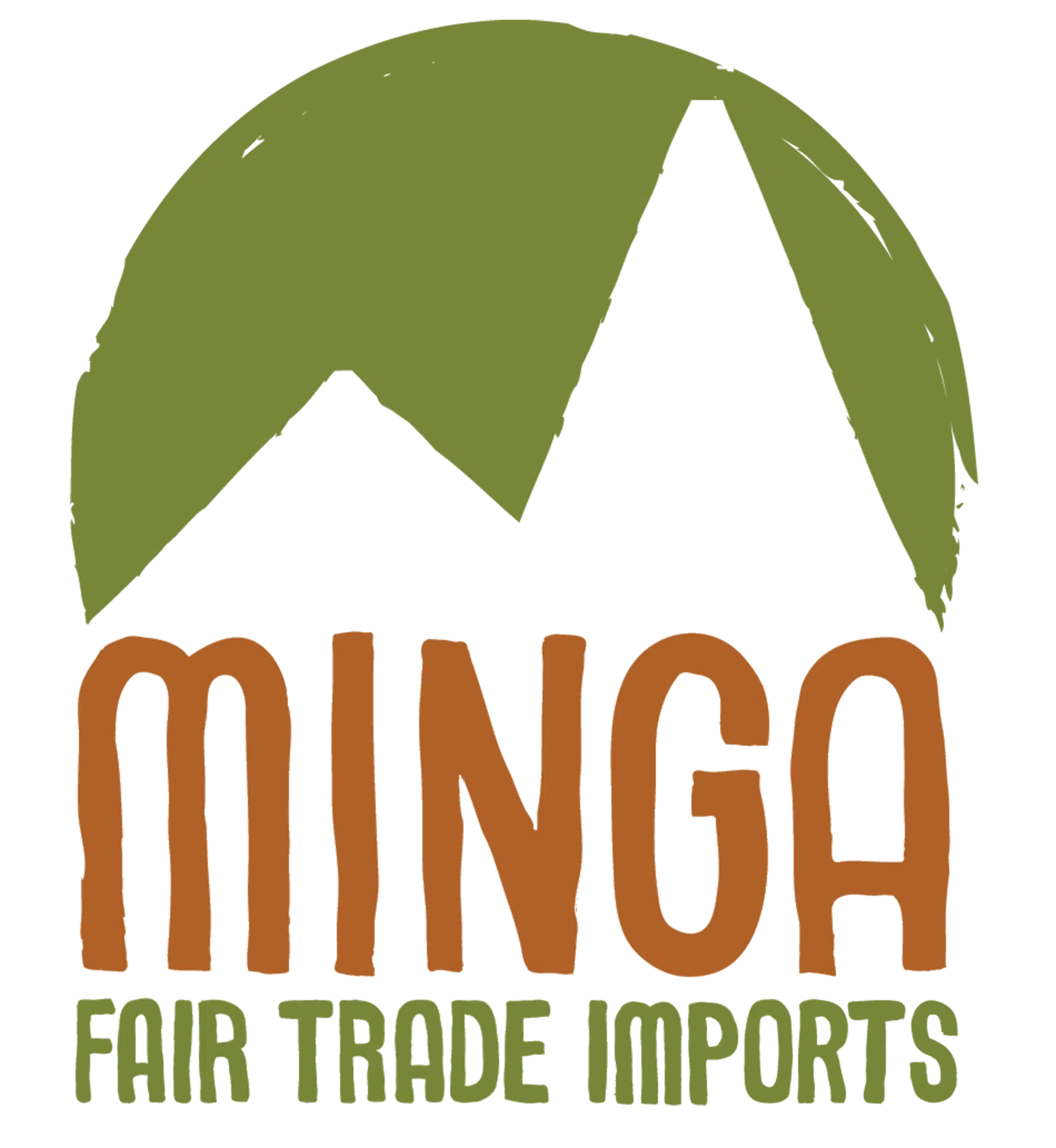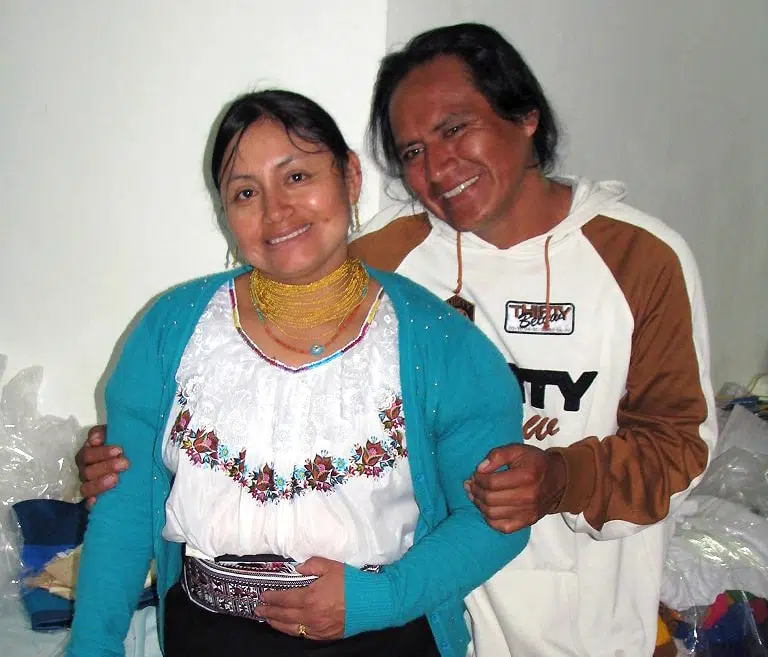Home: Otavalo, Imbabura Province of Ecuador
Products: Acrylic Scarves
Favorite Music: Romantic Music
Favorite Dance: Merengue
Favorite Pasttime: Combining colors in her work
Favorite Vacation Spot: The Jungle
Goals: To continue growing her business
Gladys was born in 1973 in Quichinche and her husband Carlos Burga in 1974 in Otavalo. They have a son named John and a daughter named Salín.
Carlos began working in textiles 29 years ago, having learned weaving from his parents as a small boy. After sixteen years, he started working in acrylic scarves and at present these are his only products. In 2011, he started working with Minga Fair Trade. His wife Gladys and son John help him in the work. Gladys learned the work from Carlos. They both love to combine colors. Carlos likes to program the designs into the machines and Gladys likes to sell the scarves in the market.
They buy their fabric from a factory in Quito, so they are able to avoid the heavy import taxes in Ecuador. Their workshop is currently about 50 meters from their home. Carlos’ brothers live in the same neighborhood, and they work in the same business.
They sell the scarves to several different countries—the U.S. (Minga is their biggest customer), Germany, Mexico, Brazil, and Canada. There’s a pretty good market for them in Otavalo, where they sell the scarves to vendors in the famous Plaza de Ponchos.
In terms of inspiration for designs, Carlos likes nature and gets ideas from it. Gladys likes “happy colors,” and loves their brightness.
It is difficult making scarves – there is so much competition in Otavalo for weavers. There is also a lot of copying of designs. Their edge in the market is that their quality and designs are so much better than others.
When asked about their hopes and dreams Carlos says, “We work to care for our children and give them a nicer place to grow up. We work for money because we need it. We would like to have a nice retirement and to be able to travel to other countries. We would love to visit the U.S.” Gladys replied, “We put love into the scarves. Because we work with our hearts, that is why we make good quality.”
Their workshop, which is much bigger than it was in 2011; it has a number of looms working. Carlos has a punch-card machine from the 1910-20 era. He makes designs on the computer, and puts a number on each square. Then he manually enters those numbers on a keyboard and prints out a small roll similar to a player piano. That is attached to the power loom. They have a big roll to warp the different colors, they attach the warp to the loom by hand, power it up and off they go. Each loom (about 10 in the workshop) can make 40-50 scarves per day. After the scarves are woven, they come off in long strips, with an empty space where only the warp shows in between each one. They are cut by hand at that gap, folded and stacked between pieces of butcher paper, and laid above a slow fire. The heat from the fire “irons” them flat and makes them crisp to the touch. They’re stacked two by two, put into bags, and shipped.
Rev. Minga 2015

